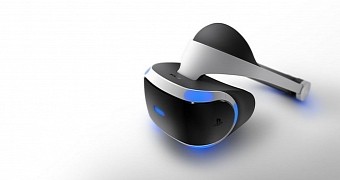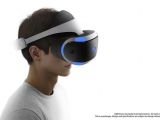The team at Sony in charge of the Project Morpheus virtual reality headset is announcing that it plans to launch it for consumers in the first half of 2015 and is also showing off some impressive specs for the platform, which are designed to eliminate the problems traditionally associated with the VR space.
During the Game Developers Conference 2015, the company has revealed that it aims to create a more immersive experience, but it has also clearly explained that the newly revealed headset is just another prototype and not the final version which will be delivered to paying customers.
Project Morpheus has a new OLED display with 1920x1080 pixel resolution, which increases the user's field of view and removes motion blur.
Sony also says that it is implementing a 120 hz refresh rate for smoother than usual visuals.
Shuhei Yoshida adds in an official blog post that "We know how critical low latency is to delivering a great VR experience, and we’ve reduced latency to less than 18ms, about half of what the first Morpheus prototype had. Low latency is critical to deliver a sense of presence, at the same time making the VR experience comfortable to players."
Three LEDs are now part of Project Morpheus in order to make sure that the device can be tracked accurately, and the overall design has been improved to make it easier to take the device off and on and to make sure that weight is accurately distributed.
More Project Morpheus details are coming during E3 2015
Sony claims that it will deliver more information during the month of June, when it will bring a number of titles supporting virtual reality at E3 2015, although no details have been offered on their nature.
The company might also deliver another prototype with even better hardware and improved ergonomics.
Project Morpheus is designed to work with the PlayStation 4 gaming console and its launch in 2016 might introduce a significant sales advantage for the platform.
The Sony platform will need to compete with the recently announced Vive from Valve and HTC, which is set to be launched during the holiday period of 2015.
Microsoft is also working on a similar solution called HoloLens, which is designed to work with the Xbox One and is somewhat less ambitious.

 14 DAY TRIAL //
14 DAY TRIAL // 
